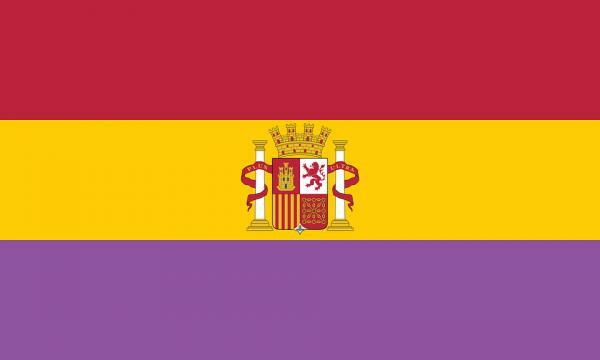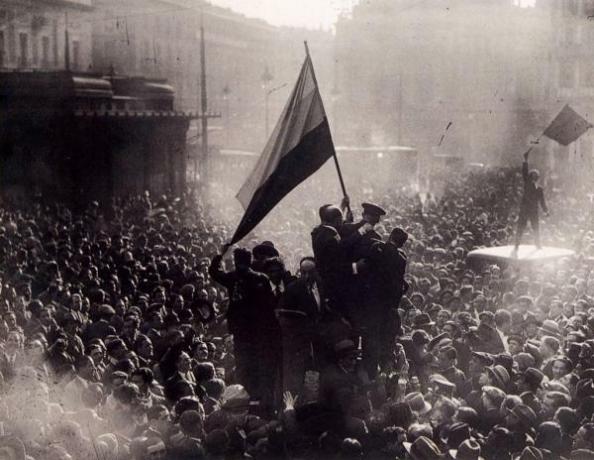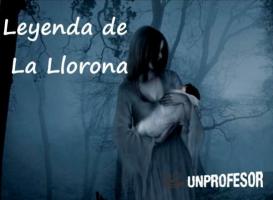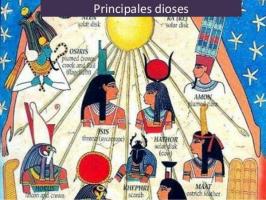The Second Spanish Republic: Summary

The Second Spanish Republic It was the political regime established for the second time in Spain named like this to differentiate it from the First Spanish Republic that occurred between the years 1873 - 1874. This Second Spanish Republic was elected in a peaceful and democratic way, being proclaimed on April 14, 1931, replacing the monarchy of Alfonso XIII and lasting until 1936. Next in this lesson from a TEACHER we offer you a brief summary of the Second Spanish Republic to know what this political regime consisted of.
Index
- The proclamation of the Second Spanish Republic
- The reforms of the Reformist Biennium (1931 - 1933)
- The problems of the Republican-Socialist coalition
- The Conservative Biennium (1933 - 1935)
- The triumph of the Popular Front (1936)
The proclamation of the Second Spanish Republic.
We start this brief summary of the Second Spanish Republic placing us on the day the republic was proclaimed. The elections held on April 12, 1931 resulted in the victory of the Republican parties in the vast majority of the cities, before these results Alfonso XIII monarchical king of Spain at that time decided to abdicate and go into exile.
Two days later the April 14 the Republic was officially proclaimed after which a provisional government was established (April - December 1931), which quickly convened Elections to the Constituent Cortes on June 28, the victory went to the Republican coalition Socialist. During this period of provisional government, the Constitution of 1931 and the President of the Republic was also appointed, Niceto Alcala Zamora, and the president of the government, Manuel Azana.
The period of the Second Spanish Republic usually be divided into three stages:
- The Reform Biennium (1931-1933)
- The conservative biennium (1933 -1935)
- The stage of the Popular Front (1936)
In this other lesson from a TEACHER we discover a summary of the First Spanish Republic.
The reforms of the Reformist Biennium (1931 - 1933)
We continue this summary of the Second Spanish Republic placing us in the first stage of this historical moment. The government led by Manuel Azana it was made up mostly of left-wing republicans and socialists, whose objective was to carry out a series of reforms with which to modernize Spanish society. Among these highlights:
- Religious reform: which consisted in limiting the dominance of the Church and secularizing Spanish society, among other things with the dissolution of the religious orders since many of these exercised in education and were prohibited from dedicating themselves to the teaching. All their properties were also confiscated and the priests, like any other citizen, were subject to the payment of taxes.
- Reform in the army: It consisted of creating a professional army with the reduction of military personnel that promised their adhesion to the Republic, creating the Assault Guard.
- Agrarian reform: consisted of a series of decrees that were intended to help tenants and landless peasants, among which we highlight the elaboration of an Agrarian Reform Law whose objective consisted in the expropriation without compensation of the lands of the high nobility.
- The reform of the centralist state: It consisted of the faculty of all those regions that with nationalist sentiment could have their own organization and access autonomy, in this way the Statute of Autonomy of Catalonia, giving rise to the Generalitat, its own government with powers in social, cultural, educational and economic issues, only in the hands of the central government were foreign affairs and defending.

The problems of the Republican-Socialist coalition.
The application of these new reforms encountered serious drawbacks especially on the part of the Church, the large landowners, the army... Right-wing groups made the decision to reorganize against the new government measures and by 1933 created the Spanish Confederation of Autonomous Rights (CEDA) that had a large number of members whose leader was José María Robles Gil.
In the same way, and on a par, too the fascist groups were gathering their forces like the JUntas de Offensiva Nacional - Sindicalista (JONS) and the Spanish Falange, whose supreme leader was José Primo de Rivera, although both parties were minorities carried out an activity of maximum agitation against those who considered the evolution of Marxism and the danger of a revolution Bolshevik.
These events caused wear and tear on the government, even leading to a failed gState olpe headed by General José Sanjurjo.
The Conservative Biennium (1933 - 1935)
We continue with this summary of the Second Spanish Republic placing us now another of the stages of this historical period. The sectors opposed to the Republic tried to end the republican-socialist coalition and, so much so, that in the autumn of 1933 Manuel Azaña ended up resigning as head of government and president of the Republic, Niceto Alcalá Zamora dissolved the Cortes calling for new elections for November.
These elections were characterized by being the first in which the women voteds. The CEDA was the one who obtained the best results, leaving the government in the hands of the Radical Republican Party whose leader was Alejandro Lerroux, In this way, a two-year period of government began, which was known as the Black Biennium.
During this period, the situation prior to 1931 was returned, so that all the reforms that were made in the first biennium were completely dismantled. In October 1934 there was a revolution by the left parties who considered the entry of the CEDA as a drift to fascism, the growth of the unemployment giving rise to a social revolution in Asturias and a separatist movement by the Catalan State of the government due to the fear that the Statute created in the first biennium would be revoked.
The consequences to this revolution were remarkable. The CEDA increased its influence in the government, and in this way Gil Roble were appointed as Defense Minister and Francisco Franco as Chief of the General Staff.
But again, a strong government crisis broke out in 1935. The Lerroux government was affected by a series of corruption scandals, losing its credibility until he was removed from office. In February new elections were called, which gave rise to the formation of two visibly opposed blocs: those of the right and those of the left.

The triumph of the Popular Front (1936)
To present themselves to the elections, the left parties (republicans, communists and socialists) were grouped in what was called the Popular Front, achieving victory. Manuel Azaña was proclaimed again president of the republic and Santiago Casares Quiroga head of the government.
Among his actions, he highlighted: the acquittal of the prisoners of the October 1934 revolution, the approval of the Catalan Statute that was previously annulled. and the transfer of Generals Francisco Franco to the Canary Islands and Emilio Mola to Navarra to avoid organizing military uprisings, although he did not dare to remove them.
The plans to definitively end the Republic were directed by the military who had the help of the political forces of the right as well as established their contacts with Nazi Germany and Italy fascist. Little by little they were gaining strength until on July 14 the assassination of right-wing leader José Calvo Sotelo by a group of leftists and that I ended up unleashing the outbreak of the Civil War on July 17, 1936.
In this video of a PROFESSOR we discover the causes of the Spanish Civil Warto.
If you want to read more articles similar to The Second Spanish Republic: Summary, we recommend that you enter our category of Story.



